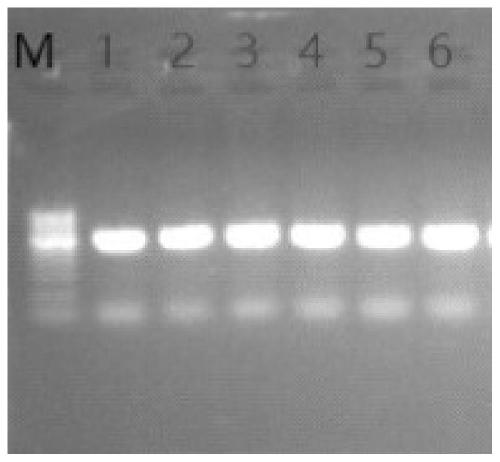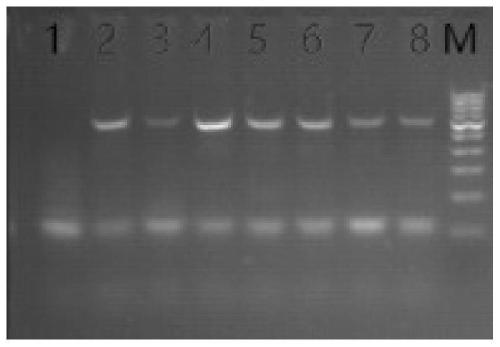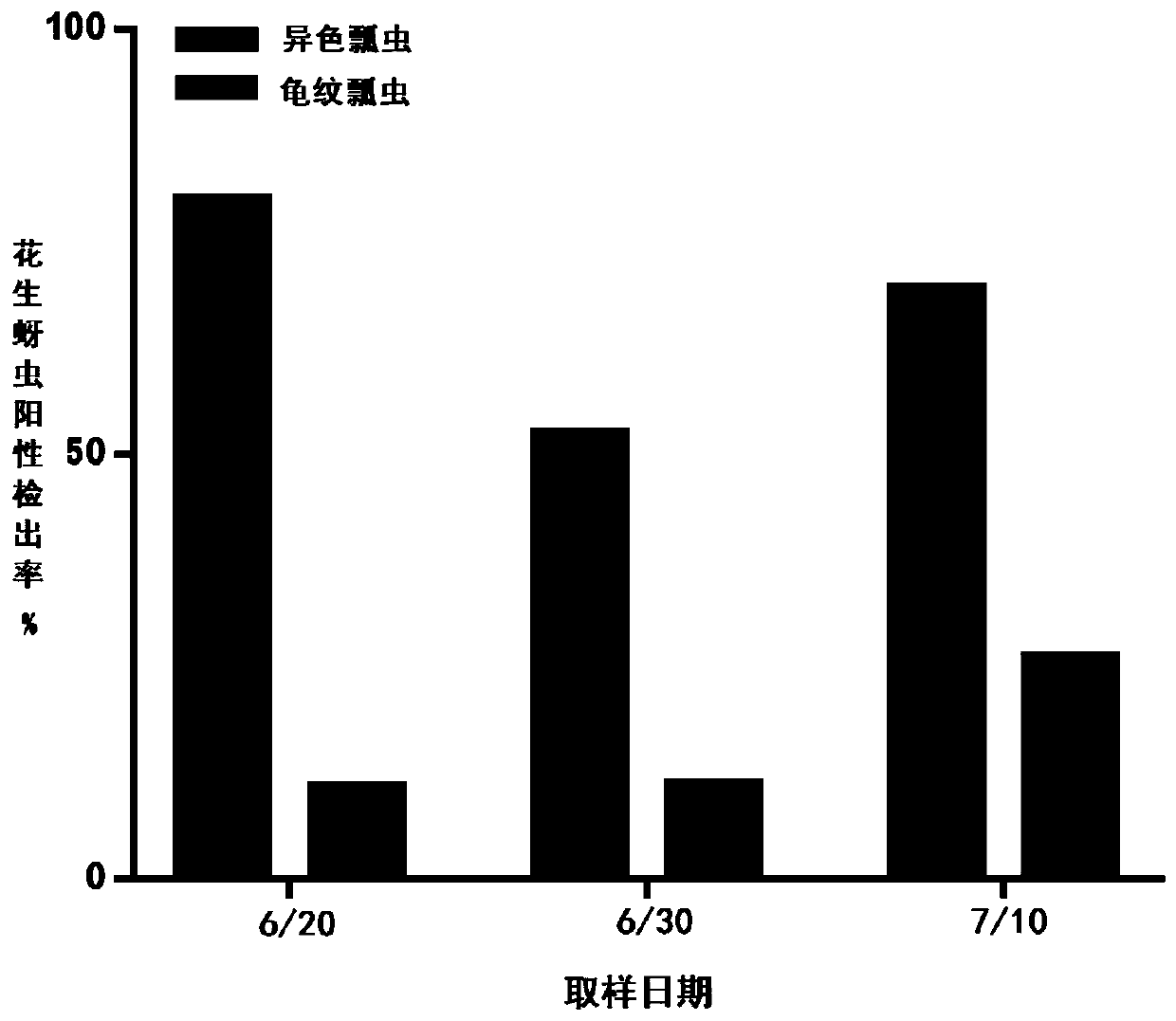COI primer for PCR detection of peanut aphids and application thereof
An aphid and peanut technology, applied in the agricultural field, can solve problems such as unsatisfactory specificity, and achieve the effects of increasing accuracy, enhancing ecological regulation, and strong specificity
- Summary
- Abstract
- Description
- Claims
- Application Information
AI Technical Summary
Problems solved by technology
Method used
Image
Examples
Embodiment 1
[0037] A method for detecting natural enemies of peanut aphids, comprising the following steps:
[0038] (1) Sampling Heterochromia in a peanut field, soaking the insect samples collected in the field in absolute ethanol, and storing them in a -20°C refrigerator for genome extraction and later molecular detection of intestinal contents;
[0039] (2) The genome of the Heterochromia sample was obtained by extracting the whole insect with the kit, and the quality of the extracted genome was verified by agarose gel electrophoresis. figure 1 Middle 1-3, it can be seen from the figure that the genome extraction method of Heterochromia is applicable and feasible;
[0040] (3) Use primers to carry out PCR amplification reaction to the genome of the heterochromia sample, wherein, the primer sequence is:
[0041] HS-F1:5'-GGAATAATTGGATCTTCACTTAGTATT-3' (SEQ ID No.1);
[0042] HS-R1: 5'-AAGGTAGTTCTGAATATGAATGTTCTA-3' (SEQ ID No.2);
[0043] The reaction system of the PCR amplification...
Embodiment 2
[0048] The difference between the present embodiment and embodiment 1 is that the sample is derived from the ladybug moire;
[0049] See figure 1 Middle 4-6, it can be seen from the figure that the genome extraction method of Heterochromia is applicable and feasible;
[0050] For the results of the amplification reaction, see figure 2 In 1-4, it can be seen from the figure that the genome of the ladybug sample in this example was specifically amplified in the amplification reaction, and it can be determined that the ladybug is the natural enemy of the peanut aphid, and it can eat at this stage Peanut aphids.
Embodiment 3
[0052]According to the method in Examples 1-2, this example detects the samples of Heterochromia and Moleensis in different periods in the peanut field, and the statistical results are shown in image 3 , it can be seen from the figure that both the tortoise and the heterochromia have feeding effects on peanut aphids, and the predation effects are different in different periods.
PUM
 Login to View More
Login to View More Abstract
Description
Claims
Application Information
 Login to View More
Login to View More - R&D
- Intellectual Property
- Life Sciences
- Materials
- Tech Scout
- Unparalleled Data Quality
- Higher Quality Content
- 60% Fewer Hallucinations
Browse by: Latest US Patents, China's latest patents, Technical Efficacy Thesaurus, Application Domain, Technology Topic, Popular Technical Reports.
© 2025 PatSnap. All rights reserved.Legal|Privacy policy|Modern Slavery Act Transparency Statement|Sitemap|About US| Contact US: help@patsnap.com



